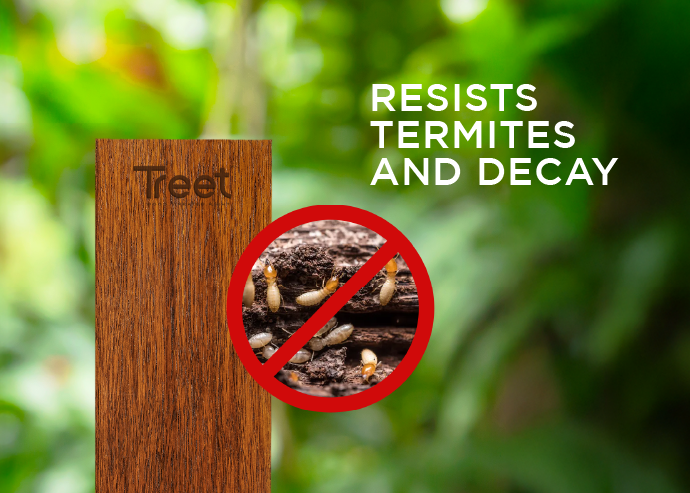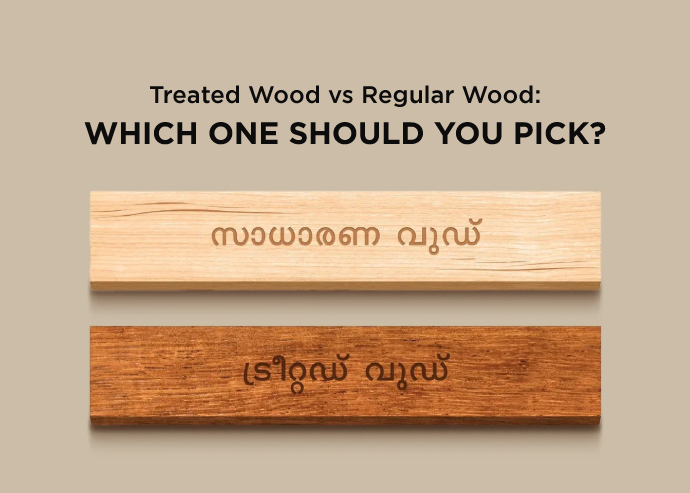Blog Details

The Science Behind Treated Wood: How It Resists Termites & Decay
The treated wood resistance to termites and decay is what every homeowner dreams of. No more door frames turning hollow overnight, wardrobes crumbling at a touch, or staircases squeaking from hidden rot.
The answer lies in treated wood. Behind the polished finish and elegant grains is a carefully designed process that strengthens the wood at its very core. Let’s unpack how it works.
Why Wood Fails in the First Place
Wood is organic. Left untreated, it is exactly what termites and fungi are looking for: food and shelter. Add in India’s humidity and monsoons, and you have the perfect recipe for decay. Ordinary wood absorbs moisture, which makes it swell, crack, and become even more inviting to pests.
This is why untreated wood, no matter how beautiful it looks at first, often struggles to survive in the long run.
How Treatment Protects Wood
Treated wood goes through a combination of steps that change how it behaves when exposed to moisture, insects, and time.
1. Drying the Right Way
Air drying and kiln drying remove excess moisture from the wood. When moisture levels drop, the wood becomes more stable and less likely to warp or split. More importantly, fungi and termites thrive in damp environments, so reducing moisture makes the wood a lot less inviting.
2. Chemical Treatment
Here’s where the real science comes in. Preservatives are infused deep into the wood fibers. These chemicals are carefully chosen to be safe for use in homes while being unappealing to insects and fungi. For termites, it is like biting into something that smells like food but offers no nutrition. For fungi, the preservatives create an environment where spores cannot grow.
3. Creating a Barrier from Within
Unlike surface coatings such as paint or polish that wear off over time, chemical treatment penetrates the wood. That means the protection is built in, not just painted on. Even if you sand or cut the wood later, the resistance to decay and termites remains intact.
Why This Matters for Indian Homes
In a country where monsoon moisture, summer heat, and termite infestations are part of daily life, wood needs help to survive. Treated wood does more than just last longer. It holds its shape better, stays structurally strong, and keeps the look and feel of premium wood species intact.
A Balance of Nature and Science
The beauty of treated wood is that it doesn’t lose its natural charm. You still see the rich grains of teak or merbau. You still get the warmth of real wood in your home. The difference is that science has made it stronger, steadier, and far less vulnerable to the things that usually shorten wood’s life.
Closing Thought
If you want your home to stand strong against termites and decay, treated wood is not an upgrade, it is the baseline. And if you’d like to understand the different treatment processes in more detail, Treet has explained them clearly in their early blog. It is a good next step if you want to know exactly what goes into protecting the wood that goes into your home.




